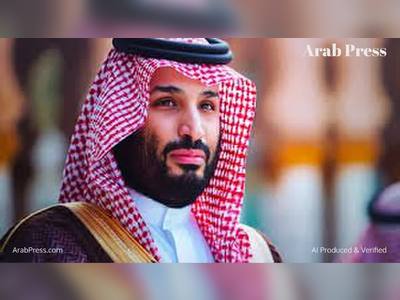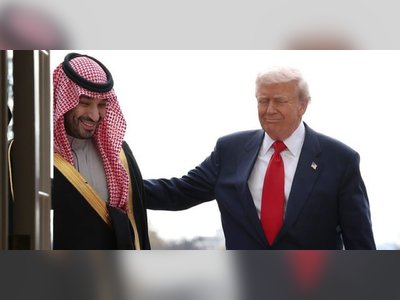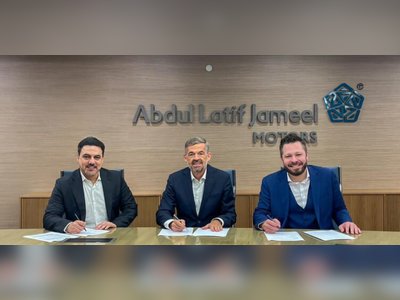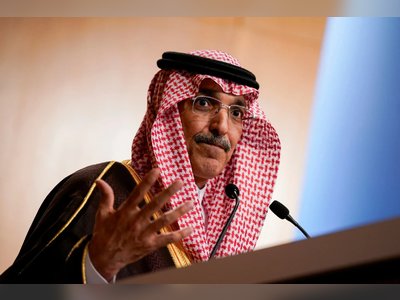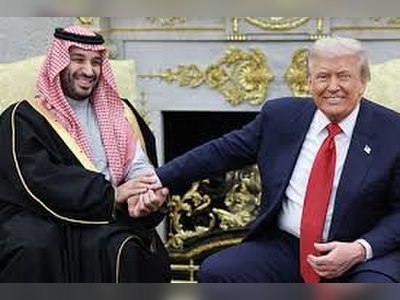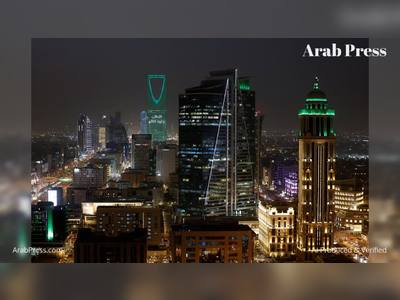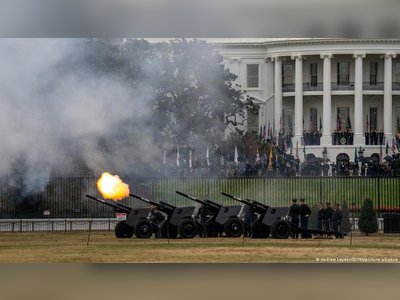
Saudi Arabia: 300-year-long journey from foundation to modernization
The Saudi State remained steadfast and unwavering when many empires, kingdoms and entities collapsed in the midst of political storms that swept most of the regions of the world, including the Arabian Peninsula. These dynasties no longer exist except for references in history books or remains of archeology or data that speak about peoples and countries that existed in the past.
In this turbulent period, a small city called Diriyah emerged in the middle of the Arabian Peninsula in Al-Yamamah or Al-Arid region. Diriyah was the original home of the Saudi royal family and served as capital of the Emirate of Diriyah under the first Saudi dynasty from 1727 to 1818.
This city was not immune to the political storms and turbulent situations. Diriyah was one among the cities and towns scattered in Wadi Hanifa, situated far away from one another. Each one of them was small sovereign states that performed as independent political entities.
Each emirate tried to settle down and exercise its right to exist, and expanded at the expense of others. This often led to wars and conflicts, resulting in some of these emirates vanishing from the geographical map.
Force was not the single factor behind the establishment of state, as well as achieving political, social and economic stability, and possessing the power of expansion and protection of the state.
There are many other factors that contributed collectively along with the strength of the state in the establishment of the state and its continued existence.
These include the charisma of governance, the strength of belongingness to the locality, complete independence from the other and finally, the presence of a constitution in its familial sense, which brings with it the idea of the state and its elements without relying on a tribal or sectarian cover.
Emirate of Diriyah
This is what was achieved in the establishment of the State of Diriyah, which was founded by Prince Manie Al-Muraidi, the 12th grandfather of King Abdul Aziz. This was nearly 600 years ago, in the year 1446.
Prince Manie returned from eastern Arabia to the center of Najd, where the ancestors of the famous Bani Hanifa tribe lived, carrying with him the idea of establishing a central state and this was achieved through the Diriyah State, located in Wadi Hanifa.
Wadi Hanifa offered plenty of water, and a suitable environment for agriculture in addition to stability. It was also situated in the heart of one of the most important ancient trade routes, which is the old Hajj Road, and was the main hub in this artery.
Historian Rashid Bin Ali Bin Jerais, who lived in the 19th century and died in 1880, summed up the scene by saying: The idea of establishing an Arab state in the Arabian Peninsula was evident to Prince Manie Al-Muraidi, his son Rabiah, his grandson Musa Bin Rabiah, and great grandson Ibrahim Bin Musa Bin Rabiah, who was called the Prince of Najd.
The historian mentioned that they were independent princes in the sense that they did not follow anyone. It was in the thinking of Prince Musa Bin Rabiah the independence of the Arabian Peninsula, and in the thinking of his father, grandfather, and his great grandfather Manie the independence of the Najd region and eastern Arabia from where Prince Manie came to establish his state in Najd, the region where his ancestors from the Bani Hanifa tribe had lived.
Those who monitored and followed the entire history of Diriyah state noted that it expanded and narrowed in accordance with the political stability prevailing there.
These matters, lessons and long accumulated experiences were present with Imam Muhammad Bin Saud Bin Muhammad Bin Muqrin, who was born in Diriyah in 1679, and died there in 1765.
He pursued a struggle in the field of leadership and foundation, which was instrumental in transferring the city-state in Diriyah, to the stage of the state that historians call the first Saudi State, whose establishment constituted a major event for the Najd region.
The rulers had a laborious task in establishing the pillars of the state and maintaining its stability, but they were threatened and opposed by foreign and local forces, the price of which was the assassination of one of its imams, at the hands of one of the hired men in the capital of the Diriyah state — Imam Abdul Aziz Bin Muhammad Bin Saud.
Imam Abdul Aziz was the son of the founder who succeeded him in power, and is considered as one of the greatest rulers in the Arabian Peninsula in terms of military and administrative capabilities.
The influence of his state had been extended to the regions of Najd, Al-Ahsa, Asir, parts of Hejaz, and the coast of the Arabian Gulf, and his armies were able to repel the campaigns of the aggressors from the Ottoman Empire. It is also noteworthy that his armies entered Makkah without any bloodshed in 1803.
His son, Imam Saud Bin Abdul Aziz Bin Muhammad, who was known as Saud Al-Kabeer, continued his father’s efforts to expand the state’s influence and consolidate reforms.
There were only a few areas in the Arabian Peninsula that were outside his state’s domination and some tribes in Iraq and the Levant who came under his jurisdiction used to pay zakat to his country.
At the time when this imam was able to unite Heiaz, the Ottoman sultans intensified aggressive campaigns against him as well as to extend their domination over the Two Holy Mosques, in addition to the elimination of the Saudi State.
After the death of Saud Al-Kabeer in 1814, his son Abdullah succeeded him. Abdullah fought battles with the Ottoman aggressors for a long period of time spanning over seven years. The Saudis showed steadfastness and valor in confronting those campaigns.
In 1818, the Ottomans dispatched a large expeditionary force armed with modern artillery to the western region of Arabia. After the arrival of the campaign leader Ibrahim Pasha in the capital of the Diriyah state, he laid siege on it that lasted more than six months.
During this period, violent battles took place between the two sides and it eventually ended with the surrender of Imam Abdullah Bin Saud in 1818. The Ottoman army besieged Diriyah, which by now had grown into one of the largest cities in the peninsula. Ottoman forces leveled the city with field guns and made it permanently uninhabitable by ruining the wells and uprooting date palms.
Consequently, the courageous Imam Abdullah was taken to Egypt. He was then sent to the capital of the Ottoman Empire, where following a mock trial he was executed with all heinousness and inhumanity.
These events were accompanied by Ibrahim Pasha’s inhumane acts and measures such as killing, terrorism, burning, destruction, and confiscation of valuables. This invasion resulted in the fall of the first phase of the Saudi State in the year 1818.
Second Saudi State
By 1824, Al-Saud family had regained political control of central Arabia. After a period of chaos, Imam Turki Bin Abdullah Bin Muhammad succeeded in expelling the Ottoman aggressors and took control of Riyadh and established the second Saudi State.
Imam Turki transferred his capital to Riyadh, some 32 kms south of Diriyah, and established the second Saudi State. During his 11-year rule, Turki succeeded in retaking most of the lands lost to the Ottomans. As he expanded his rule, he took steps to ensure his people’s well-being and enable them to avail of their rights.
Under Turki and his son Faisal, the second Saudi State enjoyed a period of peace and prosperity during which trade and agriculture flourished. However, the peaceful atmosphere was shattered in 1865 following a renewed Ottoman campaign to extend its Middle Eastern empire into the Arabian Peninsula.
The Ottoman armies captured parts of the Saudi State, which was ruled at the time by Faisal’s son — Abdulrahman. With the support of the Ottomans, the Al-Rashid family of Hail made a concerted effort to overthrow the Saudi State.
Faced with a much larger and better-equipped army, Abdulrahman Bin Faisal Al-Saud was forced to abandon his struggle in 1891. He sought refuge with the Bedouin tribes in the vast sand desert of eastern Arabia known as the Empty Quarter.
From there, Abdulrahman and his family traveled to Kuwait, where they stayed until 1902. With him was his young son Abdul Aziz, who was already making his mark as a natural leader and a fierce warrior for the cause of Islam.
The young Abdul Aziz was determined to regain his patrimony from the Al-Rashid family, which had taken over Riyadh and established a governor and garrison there. In 1902, Abdul Aziz, accompanied by only 40 followers, staged a daring night march into Riyadh to retake the city garrison, known as the Masmak Fortress.
This legendary event marks the beginning of the formation of the modern Saudi State. After establishing Riyadh as his headquarters, Abdul Aziz captured all of the Hejaz, including Makkah and Madinah, in 1924 and 1925. In the process, he united warring tribes into one nation and declared the establishment of the Kingdom of Saudi Arabia.
King Abdul Aziz, third founder, laid the foundations of a modern state, which witnessed a phased development in various fields during his reign, and the reigns of his sons — the late kings: Saud, Faisal, Khalid, Fahd, and Abdullah. Each one of them left indelible marks and remarkable imprints in accordance with the political, economic and social conditions during their reign.
Under Salman, the seventh King, and Crown Prince Muhammad Bin Salman, the country has been witnessing rapid and remarkable changes and reforms that encompassed the entire gamut of political, economic and social realms.
It has won accolades both at home and abroad, winning appreciation of several organizations. The government has launched major development projects. It also embarked on a comprehensive national vision aimed at ensuring qualitative leap in all aspects of life, as well as to build a prosperous welfare state with a shining future.
